Keeping Chickens in the Garden – The Complete Guide for Beginners with the Basics of Breeding and Slaughtering
Keeping chickens in the garden? It works! Fresh eggs with the best quality on the table through chicken keeping. Read now the ultimate guide.
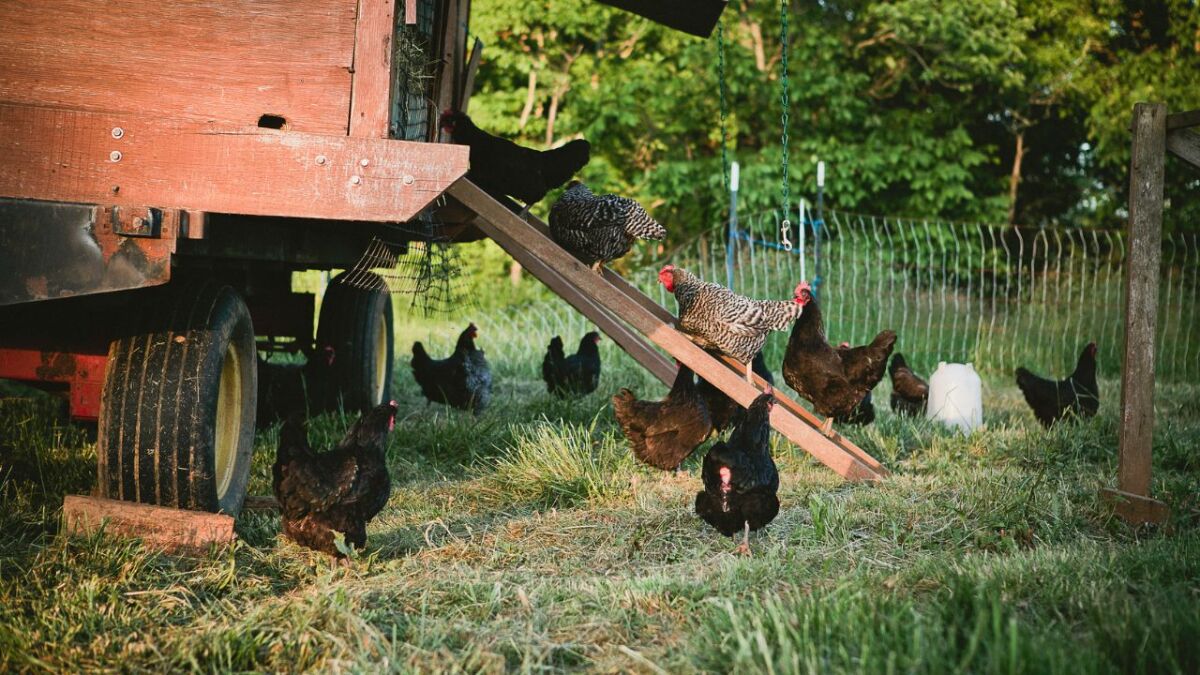

From Martin Gebhardt. Check out my “About me” page.
👉 The key facts from this guide
- Keeping chickens is an economical way to provide yourself with fresh eggs and meat. However, it requires knowledge and commitment.
- Choosing the right breed of chicken is crucial. Some breeds, such as Bielefeld chickens, are known for their fast growth, high meat production, and good eggs.
- The chicken coop should be well-equipped, with enough space, light, and air. The size depends on the number and breed of chickens.
- Adequate outdoor space is important for the well-being of the chickens. It should provide protection and enough sources of food.
- The chickens' diet should be balanced, with a good mixture of proteins, green fodder, and leftovers from the garden and kitchen.
- Slaughtering chickens is a necessary part of chicken keeping. It should be done with respect and in compliance with animal welfare regulations.
Our great-grandparents still had their garden for vegetables, fruit, and also some chickens.
Due to prices, but also availability, a large part of the food was produced by ourselves. Not only that, our great-grandparents were still able to install windows, repair the roof, and much more without craftsmen.
That's precisely where we need to go again, to withstand future crises.
And today we are talking about economic chicken farming.
Unfortunately, hens only lay well for a maximum of three years, but it is more likely to expect two good laying years.
And on average, there is one rooster for every hen. Hens and roosters not only live for eight years, but they also eat until the end.
In an economic chicken farm for self-sufficiency, unfortunately, slaughtering is part of it. Those who do not want or cannot do it should stick to vegetables and fruits.
But let's now clarify what you need as a beginner and what you need to consider starting with chicken farming.
Simple chicken keeping or chicken breeding - what is the difference?
Feeding some laying hens or fattening their brother roosters does not make one a breeder. Breeding requires selecting hens and roosters and forming breeding stocks for hatching eggs.
- Artificial Incubation: Often, these breeders opt for artificial incubation out of convenience and hatch many eggs. Then the chicks have to grow for a while to assess them. Next, a large part is sorted out due to minor or major visual defects. The breeders are happy if they still receive compensation for the animals.
- Selective Breeding: There is also selective breeding, where roosters are selected based on weight gain and hens based on egg production. Those who can establish contacts with such performance breeders and negotiate a good price or exchange price should refrain from their breeding.
- Hybrids: Hybrids are even more productive. Here, two breeds are stabilized for purebred traits and then crossed. The offspring show significantly higher performance for the F1 generation, but are not suitable for breeding. However, the question arises whether hybrids can still be obtained in a prolonged crisis.
The fact is: If you choose the right chicken breed, you can start breeding at any time.
Laying hens want a scratching area, elevated nesting boxes, and perches on the other side. Young hens and therefore brother roosters grow up as a flock on the ground level. So, one space and a chicken pasture would be sufficient.
If you decide to have your own chicken farm, you will have to put in a little more effort.
For chicken breeding, in spring, one rooster and three to four hens need to be separated as a breeding group. The animals must have their own small coop with their small outdoor area. To ensure successful hatching later on, each broody hen should ideally be sitting in a small area of her own and later lead the chicks in that area.
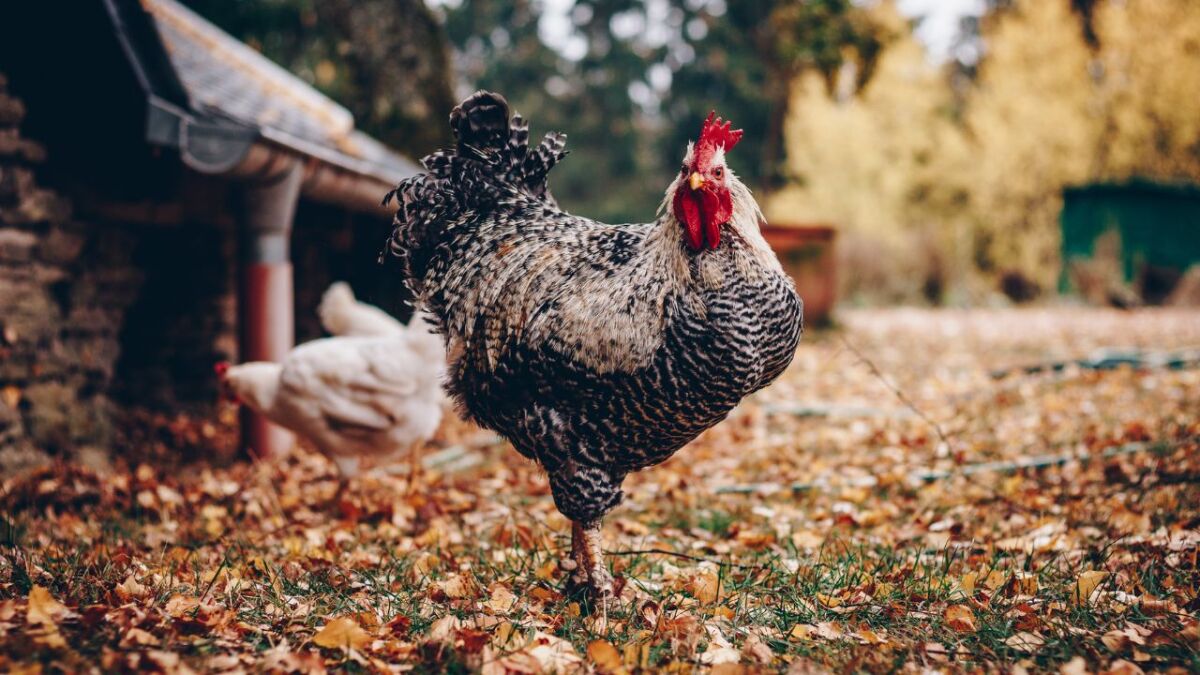
Only when they are a bit bigger, they should be moved to the small enclosure. Those who can distinguish the genders even separate the roosters from the hens to spare the latter.
In addition, the brother roosters can be fattened better. While young hens come into the chicken flock with their "puppy protection", the brother roosters need to have their own area again.
Surely, the broody hen can brood in the area and lead the chicks where the breeding stock used to live. If the pasture can be expanded a bit, it may be enough for the fattening of the cockerels.
However, there should be such an area for each breeding stock/hen.
This is not only an additional effort during construction, but also when feeding and cleaning. The broody hen always wants fresh water and food, and in the chick box, hygiene (and a heat source) is crucial in the first few weeks.
You see: Breeding chickens is therefore a significant additional effort compared to simple chicken farming.
The chicken breed - huge differences
Before starting with breeding or keeping in your own garden, the question arises about the right chicken breed.
Some chickens may appear beautiful, but they do not provide adequate performance. However, even among the commercial breeds, there are giant differences.
Accordingly, Appenzeller Spitzhauben in Switzerland were a utility chicken that would climb up the mountains during the day and sail back to the farm in the evening. These lightweight chickens lay well but put on little meat and easily flutter over the fence.
On the other hand, there are the heavy Bielefelder Kennhühner, which lay well, gain meat, and hardly take off from the ground anymore.
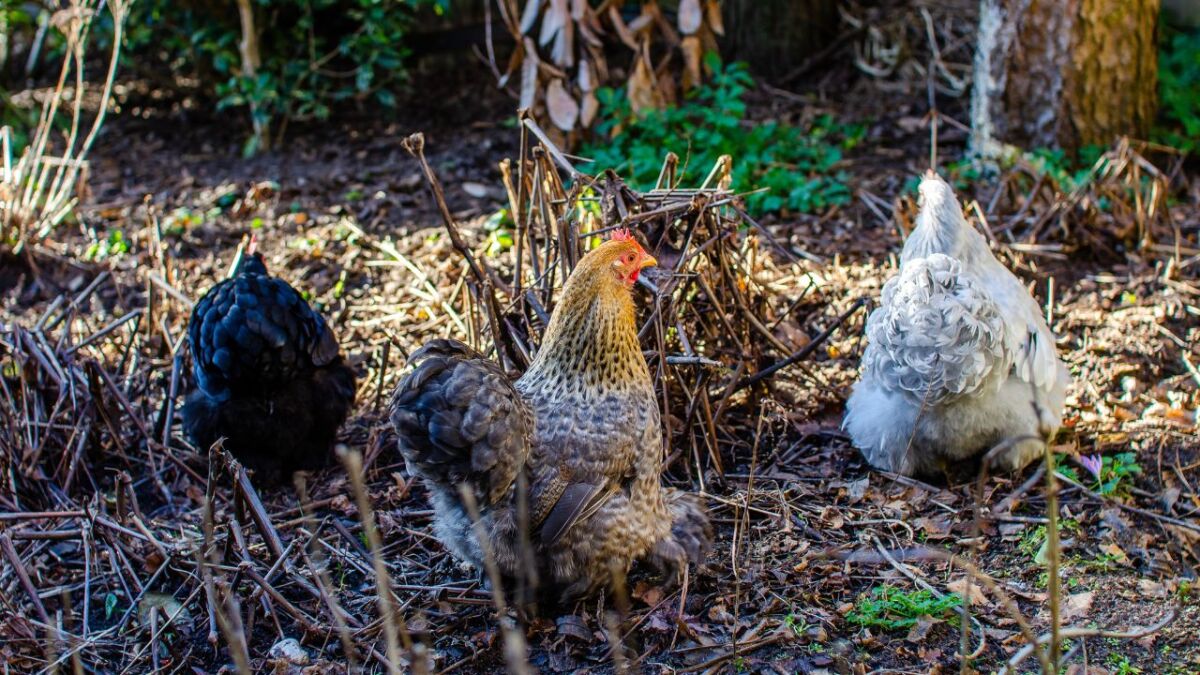
If you also want meat in addition to eggs, you would be much better off with Bielefelder Kennhühnern and would only need a medium-high fence. Because usually the chickens are not allowed to run free, as they might not all come back due to cars, birds of prey or marten.
Exactly this fence is the cost trap, as every meter and especially the fence height costs money.
Why not fence in a small enclosure? Because it would increase the feeding costs.
Because if the chickens have a lot of space, they will find more food on the ground (seeds, insects, grass, etc.). This applies to laying hens and their rooster brothers as well.
In Germany, each laying hen must have 4 m², the self-sufficient farmer should plan for at least 10 m². This significantly reduces feed costs during the warm season, and in autumn, old laying hens and young roosters are used for cooking.
A non-flying breed therefore significantly reduces the effort of fencing. This is particularly useful and easy for beginner chicken keeping.
Chicken breeds that don't fly much, are diligent foragers, and provide adequate performance include the Bielefelder Kennhühner as well as:
- Naked Neck chickens
- German Sperber
- Vorwerk chickens
- Plymouth Rocks
- Amrock
- Bresse chickens
- German Langshan
- Wyandottes
- heavy Mechelen
Except for the last three mentioned, these breeds hardly go into breeding mood anymore. Those who refrain from artificial breeding due to impending power outages should keep some silkies.
When the nest is full, the Silkie hen will almost sit on it by herself. These chickens are also lightweight and therefore do not eat large amounts.
In addition to these criteria, for example, attention should be paid to Winterleger. Those who have little concentrate feed or want to spend less money on it, choose other breeds.
Then there are chickens with feathered feet or beards and crests. For feathered feet, the ground should be even and dry.
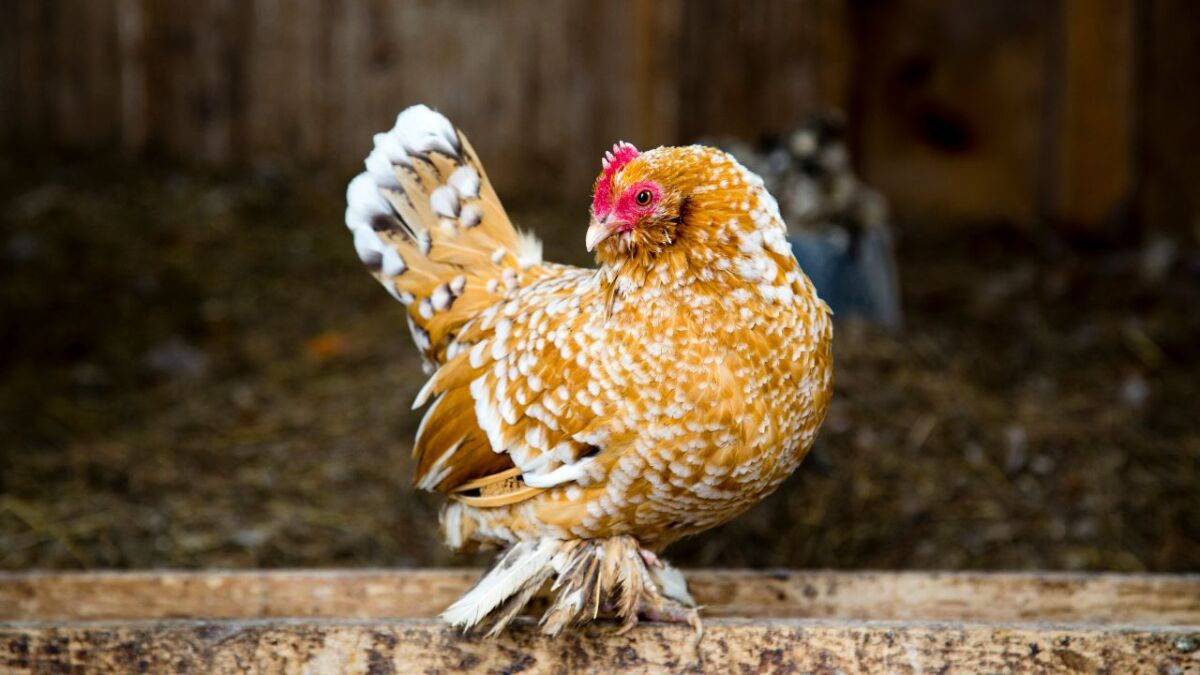
Wet food clumps in beards and crests, making parasites feel even more comfortable. These breeds are therefore more demanding for the owner.
In addition, you can also opt for bantam chickens, as they are smaller and therefore do not consume too much. However, do not keep them together with a broiler hen weighing 4 kg - this can end badly in fights.
The chicken coop - how big and how furnished?
Depending on the breed of chicken and also the stage of life, the requirements for the chicken coop can vary.
Most chicken breeds (like the ones mentioned here) prefer to roost on chicken perches. However, for the heavy Mechelen chicken, the perch needs to be slightly lower and wider due to its size compared to the smaller Vorwerk chickens.
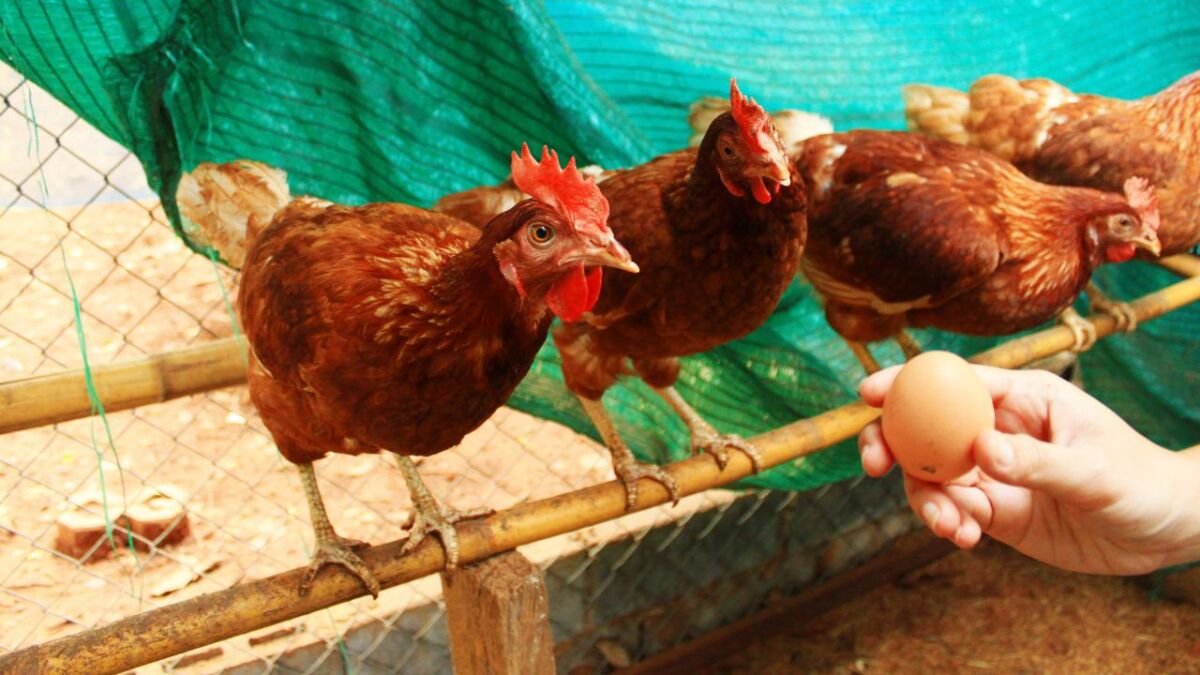
Silkies, on the other hand, prefer narrow boards at a low height. For broody hens, their chicks, young hens, and roosters, perches can be dispensed with. A ground-level chicken coop with an elevated feeding area is sufficient.
Laying hens also want elevated nesting boxes in addition to perches. One nesting box for three hens is usually sufficient.
For hygiene reasons, it is also advisable to install a droppings board under the perches, which can be easily scraped off with a scraper. The surface must therefore be durable and smooth.
How big does the chicken coop need to be?
For the broody hen with her chicks, 3 m² is sufficient for the first few weeks. Laying hens and roosters should have 3 to 7 animals per m² depending on their size. It is assumed that this area is well furnished and that the chickens have a sufficiently large outdoor area.
Chickens feel safe with a warning rooster, but one rooster for 20 hens is already enough. So, 20 normal laying hens would need at least a floor space of 5 m².
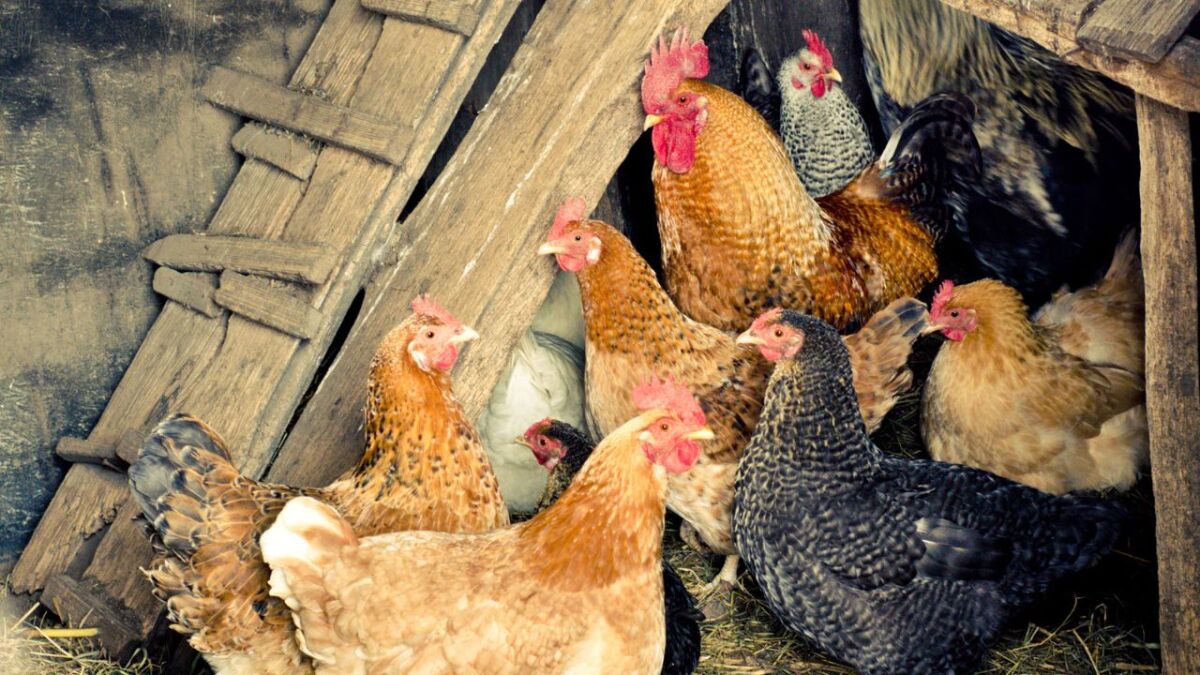
The Litter Box
If you are repairing and renovating an old garden shed, you could separate the aisle with a medium-height partition wall. At one end, the litter tray can be placed. A door leads into the room at the other end. Here, the elevated feeding area and the nesting boxes should be easily accessible.
If the dropping’s board is sealed to the walls, the space underneath remains accessible for walking. To prevent the chickens from flying into the aisle, wooden frames with chick wire can be installed.
When using the droppings board, a piece must be folded down to scrape the droppings into a cement bucket. This bucket can then be transported and emptied. However, the chicken compost should not be accessible to the chickens due to potential pathogens or parasites.
Interesting
There are chicken coops that stink. But a chicken coop doesn't have to stink, yet there are many chicken keepers who allow it. Ideally, don't be one of them and take care of your chickens.
Cleaning
Fresh water, food, and a little cleaning should be part of the daily routine.
Occasionally, however, the entire bedding, including the nesting box, is changed to thoroughly clean it. Especially before hot periods, this is advisable due to the red mite.
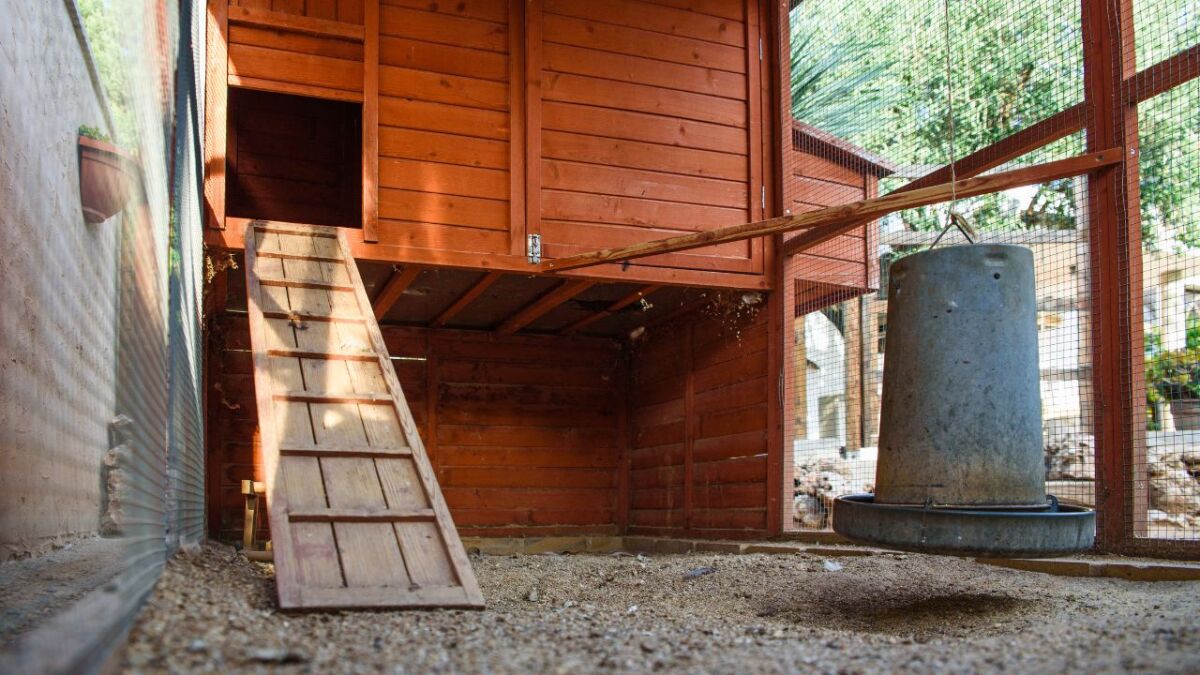
Light and Air
In addition to these aspects, light should be provided in the chicken coop. The windows should be about 20% of the floor area.
The ventilation is also important as chickens need dry and fresh air, but cannot tolerate drafts.
So a KG sewage pipe (sewer main pipe) can lead from the perches into the chicken coop at a medium height. There must also be an opening at the top.
Fresh air enters the room, warm air escapes upwards. Both openings need to be narrowed in winter and these and other weak points need to be secured with marten wire.
Due to the rodents, there must also be a secure feeding box. Dry food should be provided inside to avoid attracting other animals.
Chicken flap
Chickens are early risers and want to go out at sunrise. Therefore, the automatic chicken door is the most convenient option.
This can even be operated autonomously with a small battery and a solar cell. Nevertheless, it is safer to make a control walk in the evening.
A few grains in the bedding, and all the chickens are inside on time and don't get fat. Because overweight hens lay significantly worse.
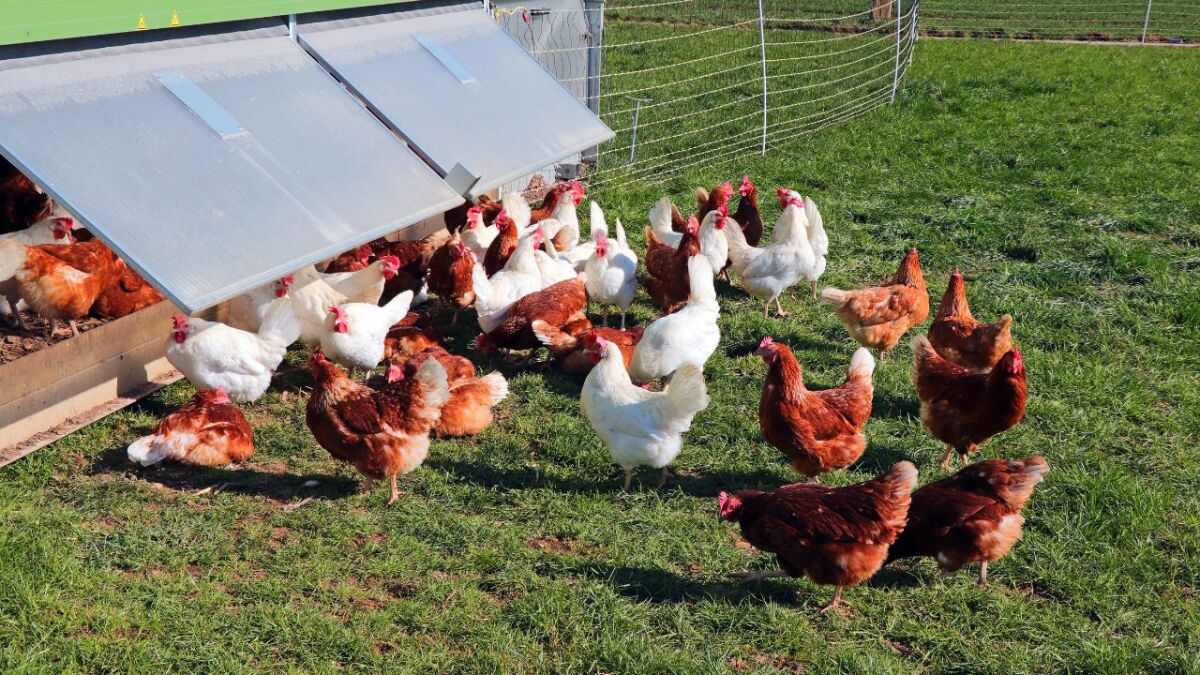
The chicken run
As escape animals, chickens want to be in cover with one jump.
As a self-sufficient person, you should therefore plant some fruit trees, berry bushes, nut trees, or hazelnut bushes on the chicken pasture. A green meadow is definitely important, but the chickens are less visible to raptors with trees and bushes.
In addition, the dust bath is essential for parasite control. There must be a dry area with shade available at any location. Pine trees with downward-facing branches are perfect, a slanted roof panel will also suffice.
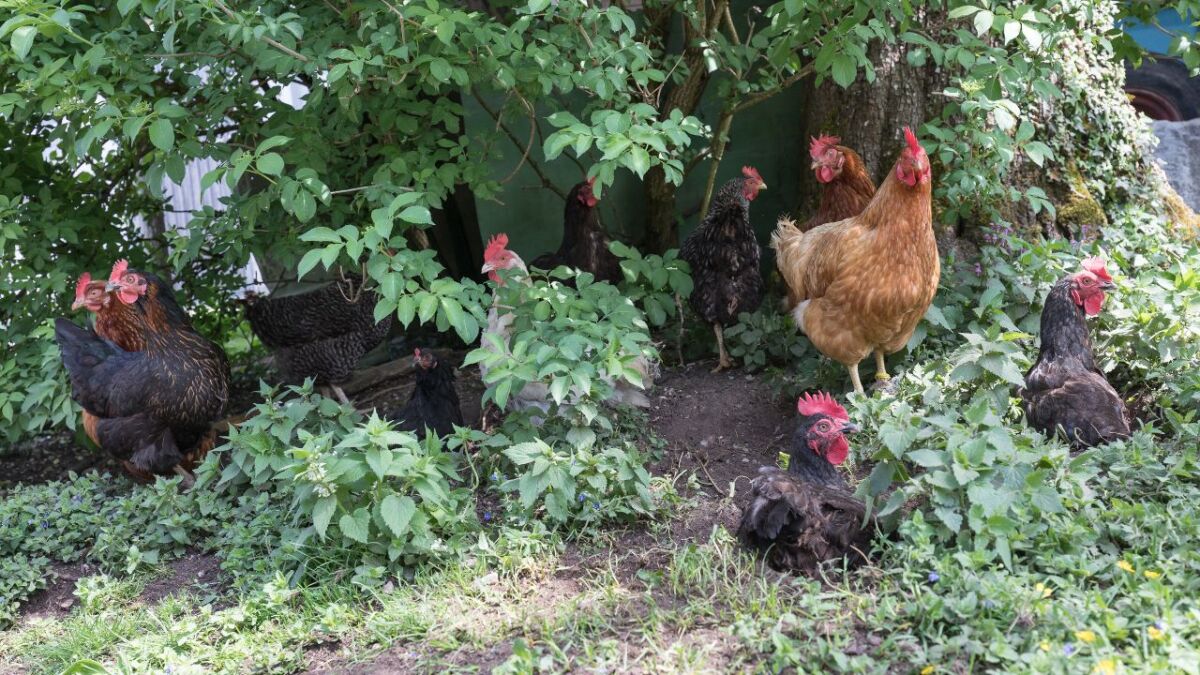
Some old terrace slabs are supposed to be placed at a spot because they can be easily swept off. Here, there is a water dispenser and also a stone trough for wet food in a shady area. Leftovers from the vegetable and fruit garden or the kitchen are also welcome here.
The chicken manure should be composted in a way that is inaccessible to the chickens. However, the remaining compost can be placed in the chicken run - chickens love to scratch around in compost.
Ideal for the chickens, but also for the fruit harvest, is a rotational grazing system. This system consists of an A and B area, with a dividing fence that ends at the chicken coop door. It allows the chickens to move from one side to the other, helping them to avoid parasites, while allowing the grazing area to recover regularly.
Important to know
Chickens scratch and peck all day, so free-range is essential. They also dig deep when they can't find any more worms, snail eggs, or grubs. So you can expect them to occasionally dig up the lawn a bit.
The Chicken Feed
Chickens provide us humans with an ideal source of protein through their eggs, but they themselves rely on a balanced source of protein.
That's why soy is almost always included in the feed mixture for chickens. A mixture of crushed beans and peas is less balanced, but also possible.
This protein source naturally drives up the kilo price for chicken feed. However, in the warm season, protein-rich chicken feed does not play a major role - just a few grains are enough to meet the calorie needs.
Because the chickens find enough insects outside in the outdoor area to meet their protein needs.
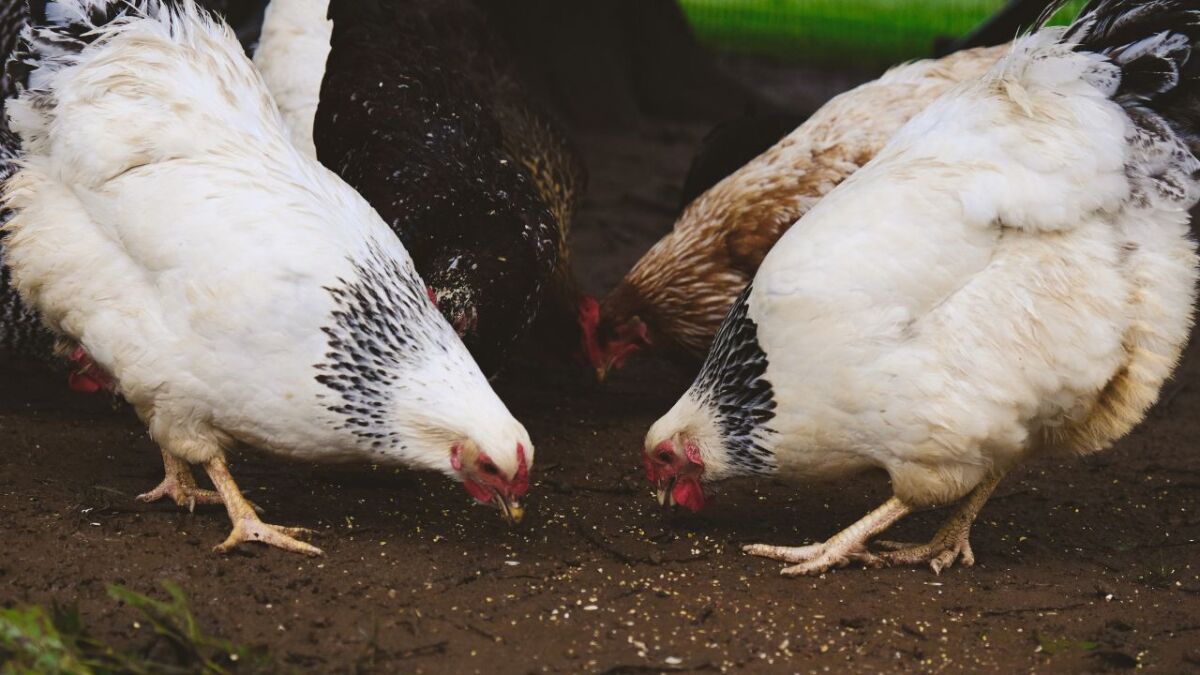
In addition, there should be shell grit as a source of calcium. In balanced laying hen feed, 3% calcium (and around 20% crude protein) is included for a reason. If a normal laying hen wouldn't find anything outside at all, 125 grams of concentrate feed per day should be calculated. For that, the egg also weighs around 60 grams.
If the run provides too few small animals, there should also be a reduced portion of balanced chicken feed in the summer.
In winter, however, it is no longer possible without it. If the hens are not currently laying, a hen feed should be chosen, for the roosters perhaps a fattening feed or some corn in the crushed grain feed.
In addition to small animals and concentrated feed, chickens, as omnivores also rely on green fodder, vegetable, or fruit leftovers. This fills their vitamin requirements.
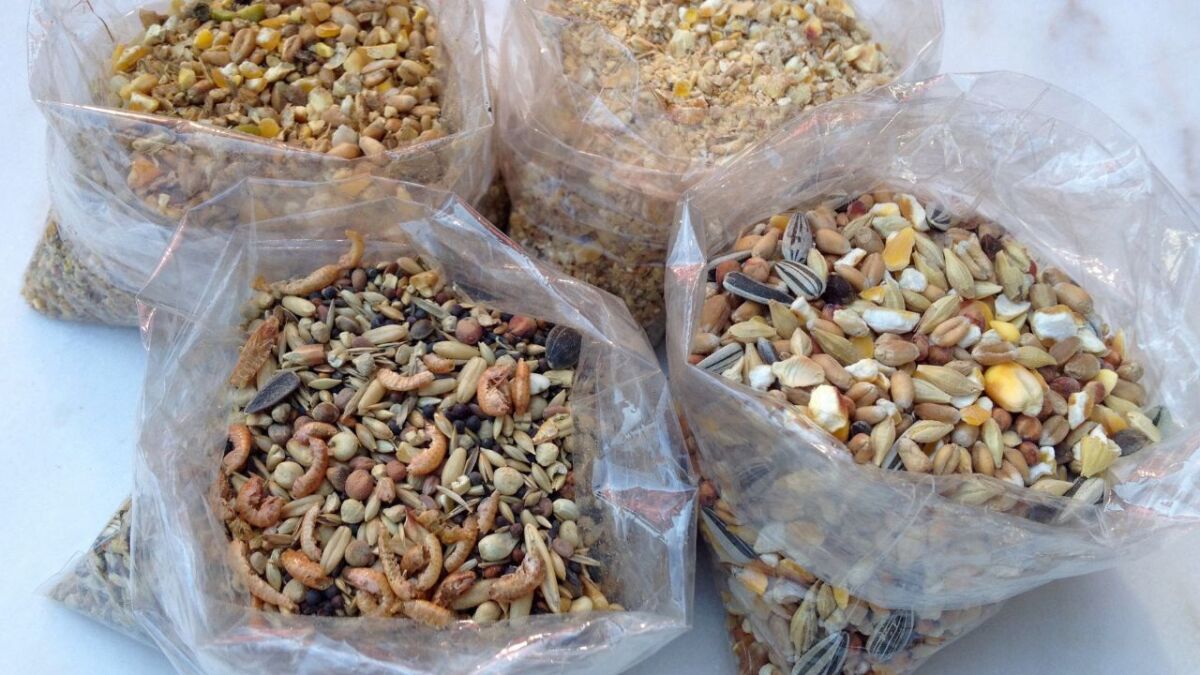
Therefore, the run should provide a lush meadow. However, leftovers from the garden and kitchen are still highly sought after. Those who grow vegetables for self-sufficiency should not skimp on winter vegetables. Alternatively, a section of the herb meadow can be left long in autumn to occasionally cut something for the chickens.
If there is leftover rice or pasta, it is a delicacy for chickens. Chickens also like cooked root and tuber vegetables. It can even be mixed with oatmeal or crushed grains and whey. However, seasoned or processed foods should not be included in chicken feed.
Slaughtering Chickens
Whoever sees their happy chickens would rather not take their lives. But in economic self-sufficiency, there is no other way than to slaughter them at a young age.
That chickens only weigh a few kg is actually a big advantage for being able to portion them well.
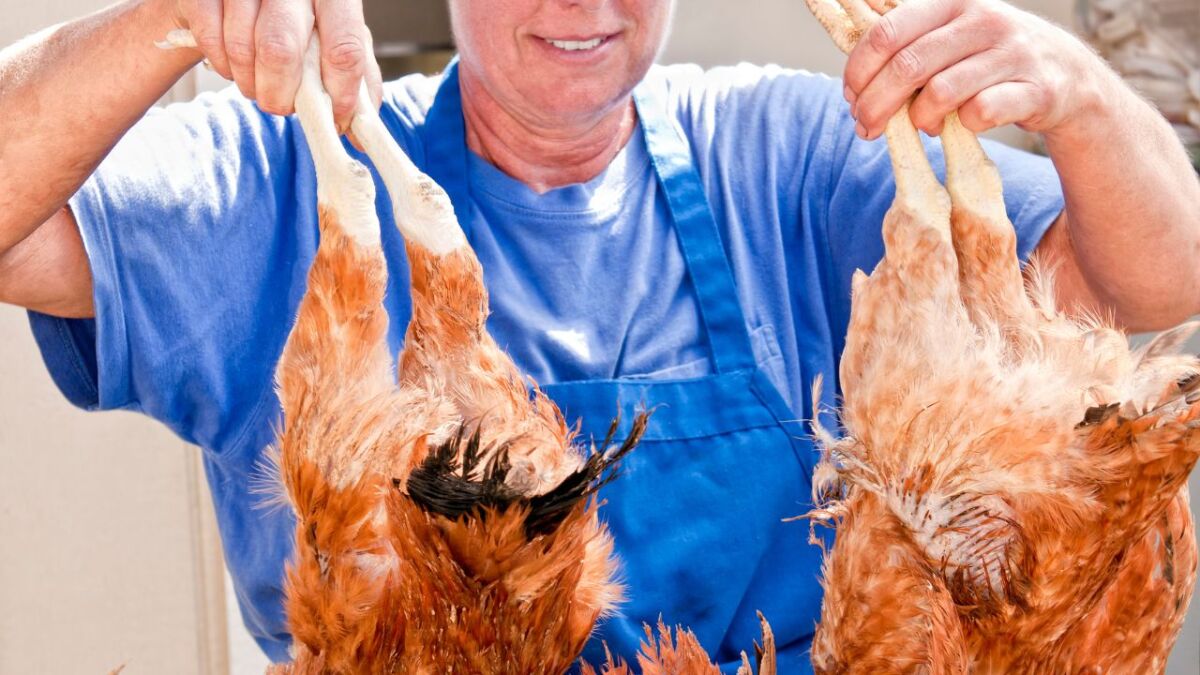
If slaughtered chickens are passed on, a separate slaughter room and proof of expertise are required. For personal use, anyone can slaughter their own chickens as long as they take animal welfare into account.
How to slaughter a chicken - Step by step
- The chickens are first stunned with a blow to the back of the head. They are grabbed by the feet and wingtips to administer a blow with a club. The blow must be strong enough to make them lose consciousness.
- Then the throat is cut, or the entire head is severed with an axe. It is best to hang the chickens by their feet to bleed out. The chickens should bleed out quickly.
- After bleeding out, it is easiest to briefly dip the chickens in water heated to 60 to 70° Celsius to make plucking easier.
- Then the crop is removed by making a cut in the neck. It is important to grip the skin in a way that the crop is not cut open. It is carefully removed along with the air and esophagus.
- The abdominal cavity is opened to remove the innards without damaging them beforehand. The easiest way is to make a careful incision below the breastbone through the abdominal wall, insert a finger, and pull up the abdominal wall to further open it.
- First, the large and hard stomach is removed along with the liver. Next, the intestines are taken out. But before that, a knife is used to pierce the skin under the tail above the cloaca, to cut out about three-quarters of the cloaca. Now the last piece of intestine is pulled out slightly to separate the rest of the cloaca. The entire intestine can be removed.
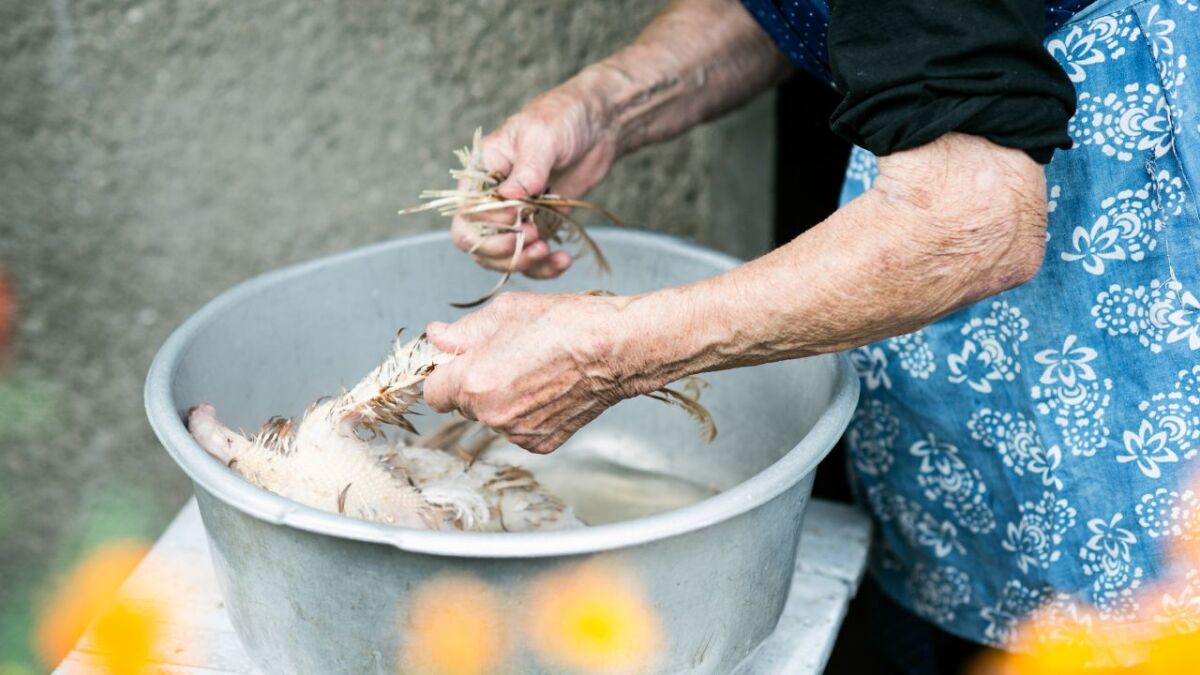
Gallbladder, adrenal glands, and intestines are not suitable for consumption. However, heart, the sliced and cleaned stomach, lungs, kidneys, and liver are suitable.
Finished slaughtered chickens should be washed with cold water before they are ready for preparation. If you cannot eat all the chickens immediately, you should store them in a cool place, freeze them, or process them.
Furthermore, slaughtering some chickens involves work, which is why it makes sense to always slaughter the fattest roosters first. If they are not fat enough yet, older laying hens can also be plucked.
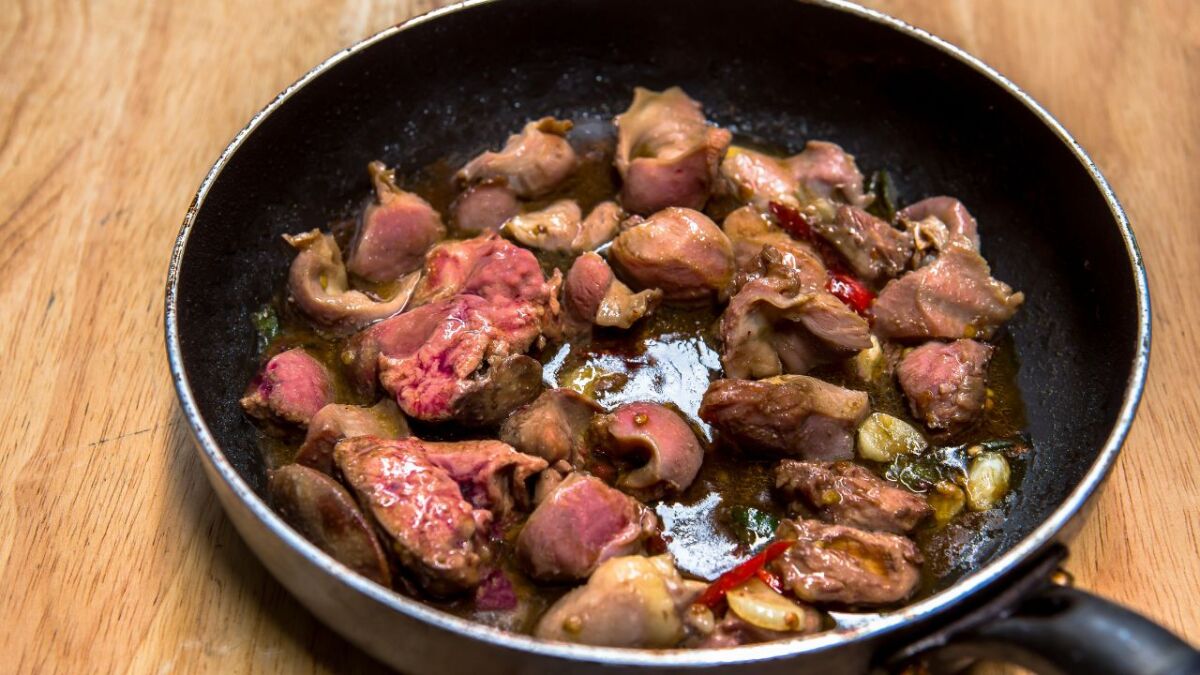
Offal - gone to the dogs
Many people are familiar with the term Barfing. In this process, dogs or cats are supposed to receive meat just like their wild ancestors.
However, it is important for a balanced nutrient supply that they also receive offal.
If you have a dog nearby, you can feed them the slaughterhouse waste. This also applies to the heads and feet. This slaughterhouse waste is even the treats for many raw-fed dogs and cats. But you better avoid gallbladder and adrenal glands.
If slaughterhouse waste is eaten, it is always better than burying it or flushing it down the toilet. Both are actually prohibited, as proper disposal is required by law. However, many dogs end up with small amounts.
Not only eggs and meat, but also feathers are useful
Some chicken breeds have few down feathers, while others have a lot. These are the soft feathers on the belly and lower rear, as well as the undercoat.
If these are down or other feathers, they can be gently cleaned in lukewarm water and dried in thin layers.

Just down feathers are very interesting for warming feather pillows. Coarser feathers could possibly also be used as a core for improvised mattresses or insulation. In this case, other materials would probably be more interesting.
Nevertheless, even feather remnants are still valuable. They can be put in the compost and, over time, release their nutrients just like horn shavings.
It is worth at least sorting down and feathers while plucking and processing at least the down.
Legal foundations for chicken farming
In Germany, animal welfare is important and for good reason. Chickens are considered small animals and can therefore be kept in the city, just like dogs, cats, rabbits, guinea pigs, or parrots.
The housing, however, must meet the needs of the animals. For chickens, keeping them in a garden is sensible, but not in a concrete residential area.
If you live in a residential area where everyone still has their own garden, you can keep chickens. Courts tend to decide that a maximum of 20 chickens is still reasonable. If you have a lot of space in a peripheral location, you should be allowed to keep significantly more.
So far, the theory.
Is keeping chickens in residential areas reasonable?
Whoever is the first to keep chickens in a residential area may still be sued by neighbors. Often, the judge will side with the plaintiff, or it may just be necessary to remove the rooster (because it is louder than the hens).
But ultimately, even the complete keeping of chickens can be prohibited. Unless customary law already applies.
If one's own chicken farming or that of the neighbors has been tolerated for years, it is unlikely that a judge will prohibit it. Unless a neighbor can prove that they are suffering from health damage due to the chicken farming.
Another issue is owners, landlords, property managers, and therefore the respective house rules. If they prohibit chicken keeping, the tenant - and even the owner in the case of a shared property - is bound by these rules.
It is therefore better to consult the neighbors, owners, property managers or other institutions in advance. Because if you build your chicken coop on a solid foundation or exceed a certain size, you probably even need a building permit.
Reporting obligation, vaccination obligation, stable obligation
Unfortunately, there are even more obligations: Even individual hens would have to be reported to the veterinary office and the animal disease fund.
But for the welfare of the animals, you should at least get three hens and possibly a rooster, if the rooster does not overwhelm the hens.
In addition to the reporting obligation, there is a vaccination requirement against Newcastle Disease (highly contagious viral disease of chickens and turkeys). The annual injection at the veterinarian is quite expensive. It is better to introduce oneself to the local poultry association.
They buy a vaccine for their members every quarter, which is administered through the water. In the late evening, the chickens are deprived of water. Before the chicken flap opens, they receive their water with vaccine and drink because they are thirsty.
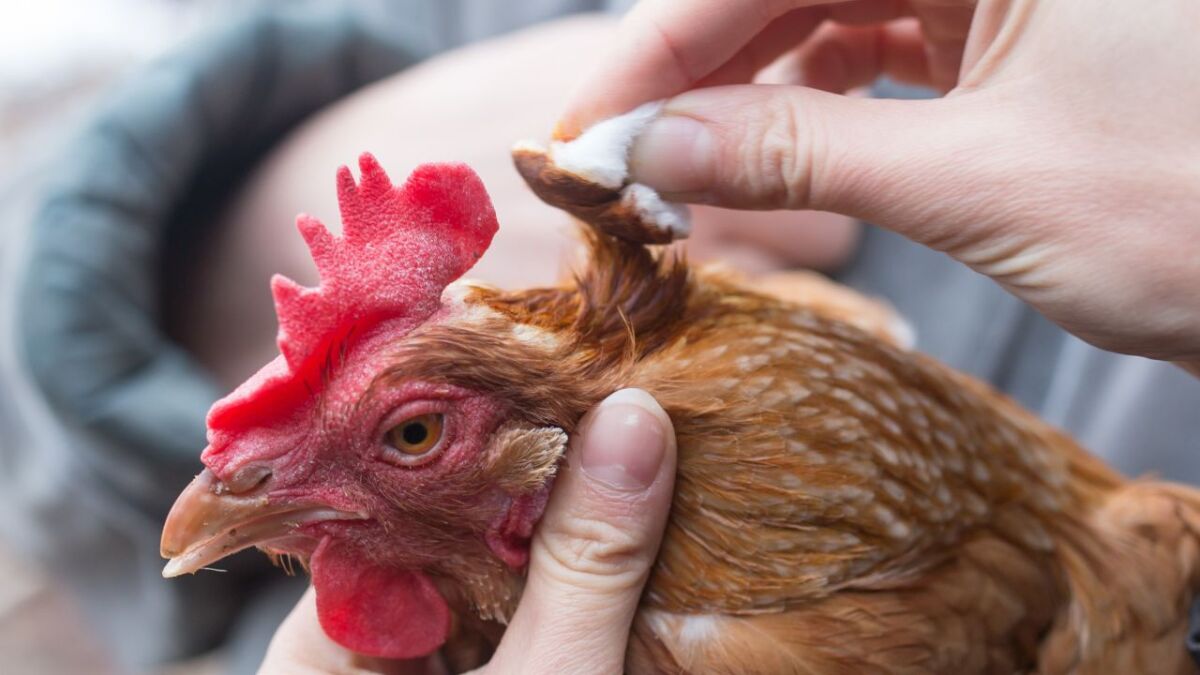
There are also vaccines available for other diseases or epidemics, which can be useful. However, there is no vaccine available for bird flu.
Where there are incidents, the regional stall requirement is declared. Even the private owner is bound by it and must keep their chickens in the coop or a covered aviary. In this situation, there should be an expansion option. If not, a portion of the chicken flock will simply end up in the pot earlier.
The poultry association also recommends breeders, provides tips for keeping and can facilitate the exchange of furnishings.
Because even the chicken breeder has to maintain contact with other breeders to occasionally exchange hatching eggs and breeding roosters. Otherwise, one day inbreeding will catch up with you, which ultimately destroys any population.
Read also
How to breed rabbits for your own meat supply? - Learn in this guide how to establish an independent meat supply in a crisis by raising, breeding, and slaughtering rabbits.
Questions and Answers about Chicken Farming
Is chicken farming a lot of work?
Chicken farming is not a big job, but there are some tasks that need to be done regularly. These tasks include feeding and watering the chickens, cleaning the coop, and collecting the eggs.
Is keeping chickens allowed in the city?
Usually yes. However, there are always cities and municipalities that prohibit the keeping of animals or impose certain conditions. It is best to inform yourself beforehand at your city or municipal administration.
Is keeping chickens in the garden allowed?
As a rule, keeping chickens in the garden is allowed. However, there may also be exceptions that are specified in the respective municipal regulations.
Is keeping chickens allowed in residential areas?
This is regulated differently from municipality to municipality. However, in general, keeping animals in residential areas is not allowed.
What does chicken farming cost?
The cost of keeping chickens can vary depending on the types of chickens being kept and the amount of effort one wants to invest in their care. A basic setup for keeping up to ten chickens costs around €100 to €300. In addition, there are costs for feed and veterinary visits. Expect monthly costs of €4 to €6 per chicken.
Where do I need to register my chicken farming?
In Germany, every chicken farming, whether poultry breeding, laying hen or fattening operation, must be reported to the responsible veterinary office. What is organic chicken farming?
What is appropriate chicken farming?
Appropriate chicken husbandry is the keeping of chickens in which a natural living environment and a balanced diet are considered. The animals should have space to roam and feathers and should not be kept in cages.
Which chicken farming method is the best?
It depends on what priorities you have. If you value appropriate animal welfare, a free-range system is probably the best choice. Otherwise, cage housing may be acceptable for you.
How much space do I need for chicken farming?
For one chicken, you need at least 4 m² of land. Since you should keep at least three chickens together, you need 12 m² of land. Of course, you can also keep a larger flock, but then you need to use more land accordingly.
Chicken coop: How big should it be?
The size of the chicken coop depends on the number of animals kept. Some experts recommend providing approximately 0.5 to 1 square meter of coop space per animal.
Do you need a rooster for chicken farming?
A rooster is usually necessary as it takes on the role of a mating rooster. It ensures that the hen is fertilized and can lay eggs.
How to prevent the rooster from crowing?
Unfortunately, roosters cannot be prevented from crowing. No matter what you do, you will always hear them. However, there is the option to put on a kind of rooster collar. This collar reduces the amount of air that the rooster can put into its vocal box.
What should you feed chickens?
Chickens should be given a balanced feeding plan that provides them with all the nutrients they need. Some chicken keepers choose to feed their chickens only grains and grass, but it is important to also supplement with other sources of protein and vitamins. Eggs and insects are an excellent addition to the chickens' diet and should be offered regularly.
How old do chickens get?
Depending on the breed, chickens live to be 5 - 10 years old.
How many eggs do chickens lay?
Chickens lay approximately one egg per day. On average, each chicken lays 300 eggs per year.
Where can I buy chickens?
Chickens can be purchased at a poultry farm, from a breeder, at an agricultural store, or online.
Conclusion: Chicken farming is a great way to be self-sufficient
Chicken farming provides fresh eggs, meat, feathers, and also composted chicken manure for the garden. That's wonderful when you consider the added value these animals provide.
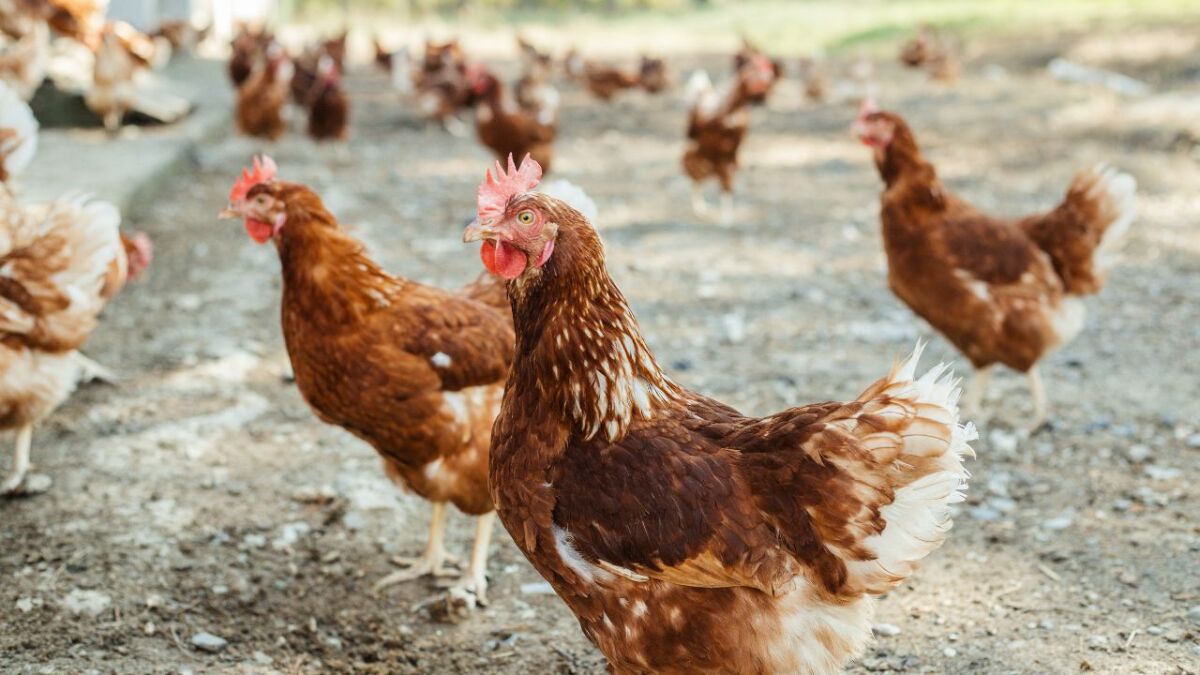
But chicken farming also means work, and every chicken owner needs a substitute during vacations. However, those who still keep a few chickens could easily keep a few more, as the workload wouldn't be much higher. Nevertheless, nobody needs to push their full capacity if time is scarce.
However, if we have to sweat in the garden like our grandparents due to a lack of availability or high prices for eggs, meat, and down, you will find a good starting point with this guide.
As with many other things that promote your self-reliance and independence, it is important to engage with the essential things in life. That's what you just did.
And if you are now planning to keep chickens yourself, I wish you good luck. You are welcome to share your insights with us in the comments.


Author of the guide
Martin Gebhardt
Hey, I'm Martin. On my blog, you will learn the basics and numerous details about living in the wild. I think survival, bushcraft and the good life in nature are the keys to happiness. Find me here on Instagram or on YouTube. You can find more about my mission on the About Me page.
Was this guide helpful?
17 people found this guide helpful.
5.00 out of 5 points (17 Ratings)
Comments (0)
This post may contain affiliate links. So if you click on the links and make a purchase, I will receive a small commission at no additional cost to you. Click here, to learn more about it.



